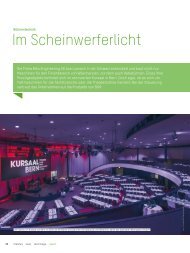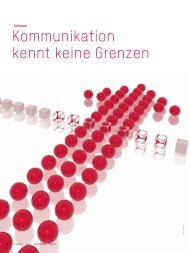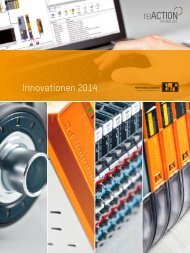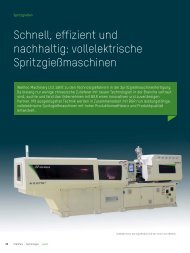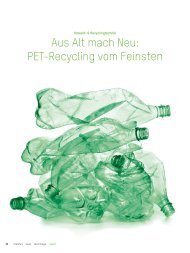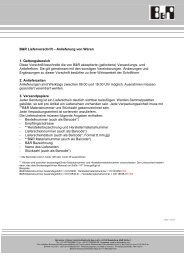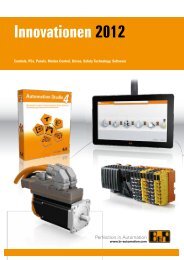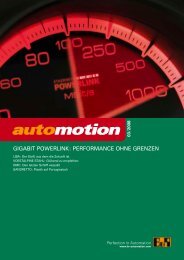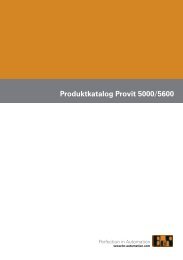automotion automotion automotion automotion - B&R Industrie ...
automotion automotion automotion automotion - B&R Industrie ...
automotion automotion automotion automotion - B&R Industrie ...
You also want an ePaper? Increase the reach of your titles
YUMPU automatically turns print PDFs into web optimized ePapers that Google loves.
Application<br />
Reel changes with<br />
real advantages<br />
For foodstuffs processing lines,<br />
downtime for changing label<br />
reels or due to torn backing material<br />
is not just inconvenient, it<br />
costs money. CFS has therefore<br />
developed a concept that enables<br />
label reels to be changed without<br />
stopping the machine. With<br />
a thoroughly modular structure,<br />
the new labeling machine can be<br />
perfectly adapted to the requirements<br />
of any application. Up to 16<br />
ACOPOS servo motors, as well as<br />
control and visualization technology<br />
from B&R provide the necessary<br />
dynamics, precision and ease<br />
of operation.<br />
"In a typical processing line for<br />
lunchmeat or cheese, between 7.5%<br />
and 12% of all downtime is caused<br />
by the labeling equipment," explains<br />
michael Brandt, product manager for<br />
Labelling & printing at CFS germany<br />
gmbH in Wallau. the bulk of this<br />
downtime is spent exchanging the<br />
label reels. Not surprisingly, considering<br />
that at typical speeds of high<br />
performance packaging machines (8<br />
cycles per minute, 16 products per<br />
cycle), an average reel of 5,000 labels<br />
is used up after only 40 minutes.<br />
If a thermal transfer printer is used,<br />
there may be additional downtime<br />
required to exchange the carbon<br />
tape it requires. If the backing material<br />
for the labels is especially thin,<br />
flexible or perforated, conventional<br />
machines experience additional<br />
problems and unexpected downtime<br />
due to torn backing material.<br />
Going their separate ways: Label<br />
dispenser and applicator<br />
unit<br />
the experts at the CFS competence<br />
center for packaging machines and<br />
labelers in Wallau have addressed<br />
56 <strong>automotion</strong> 07/2009<br />
this problem by developing a new<br />
concept, and used this concept to<br />
implement a new labeler, the tiroLabelNt.<br />
this labeling system is<br />
the first cross web labeler on the<br />
market that allows label reels to<br />
be exchanged during machine operation.<br />
this innovation was made<br />
possible by creating two separate<br />
units for dispensing and applying<br />
the labels, functions that were previously<br />
grouped in a single construc-<br />
tion. the movable applicator unit<br />
takes the labels from the stationary<br />
dispenser and places them over<br />
the products to be labeled. Springloaded<br />
"fingers" then press the labels<br />
onto the products.<br />
Equipping the machine with two dispenser<br />
units allows the label reels to<br />
be exchanged without stopping the<br />
machine: to make this possible, the<br />
machine must be constructed and<br />
The new TirolLabelNT is designed so that the applicator unit goes to the second<br />
dispenser as soon as the first dispenser is empty - the empty dispenser<br />
can then be easily filled without shutting down the machine.



